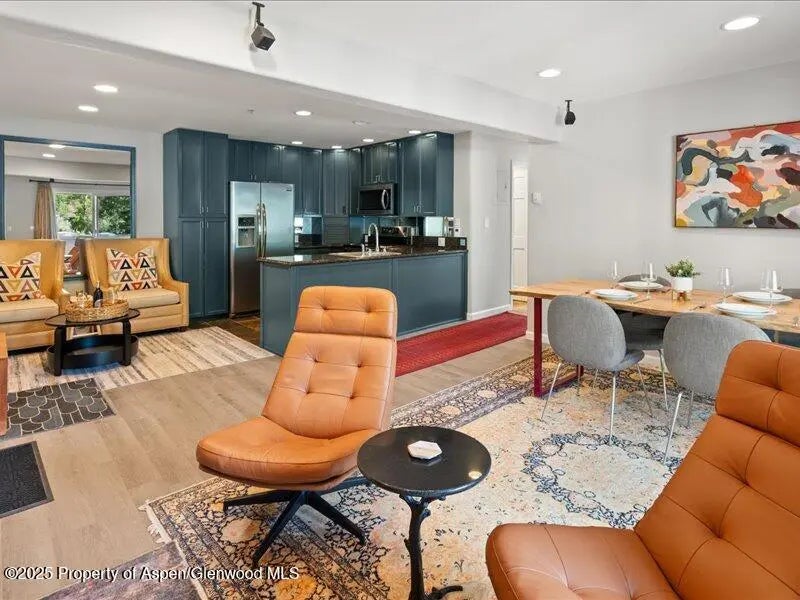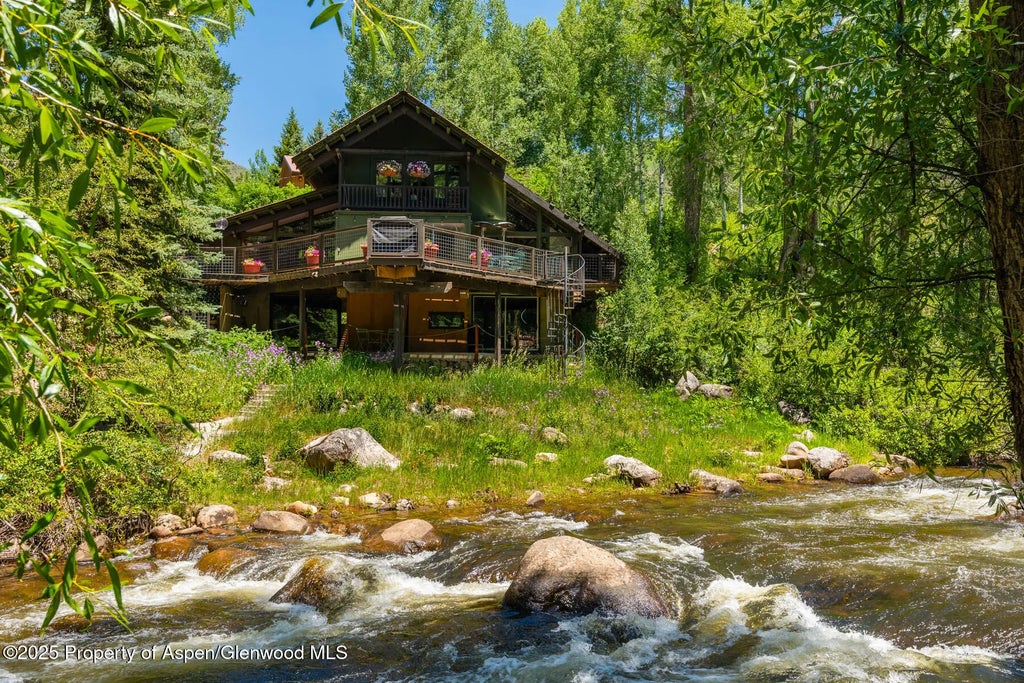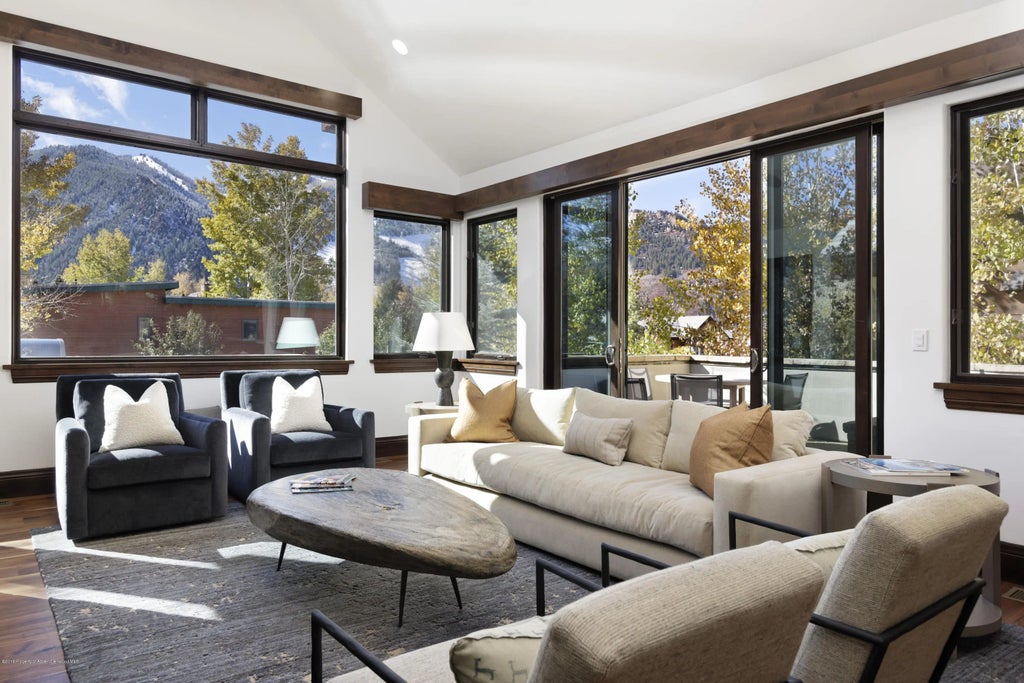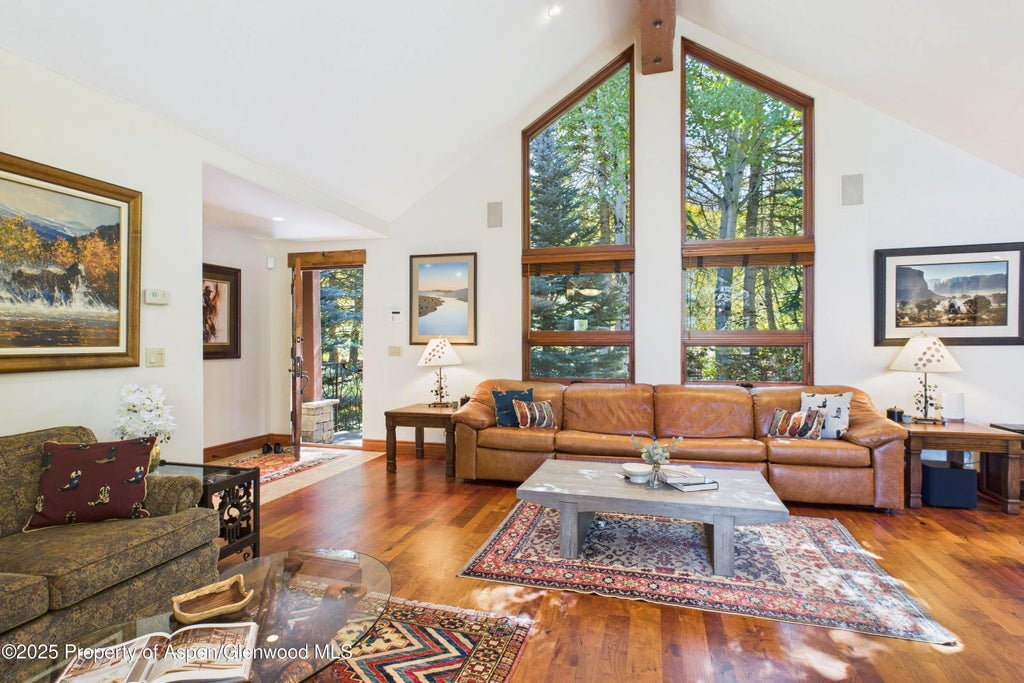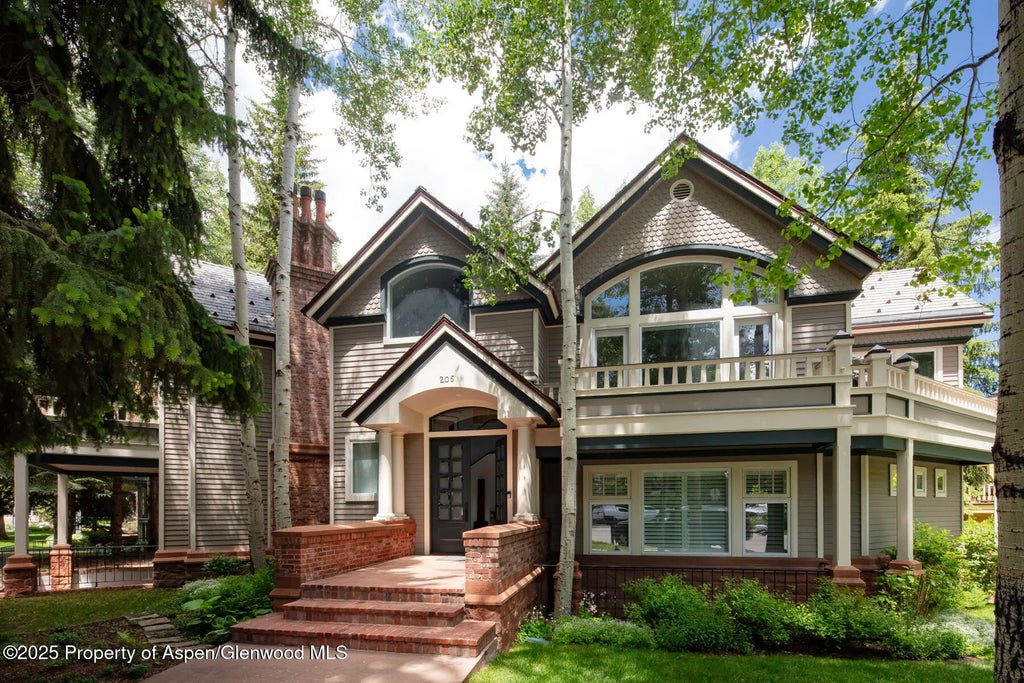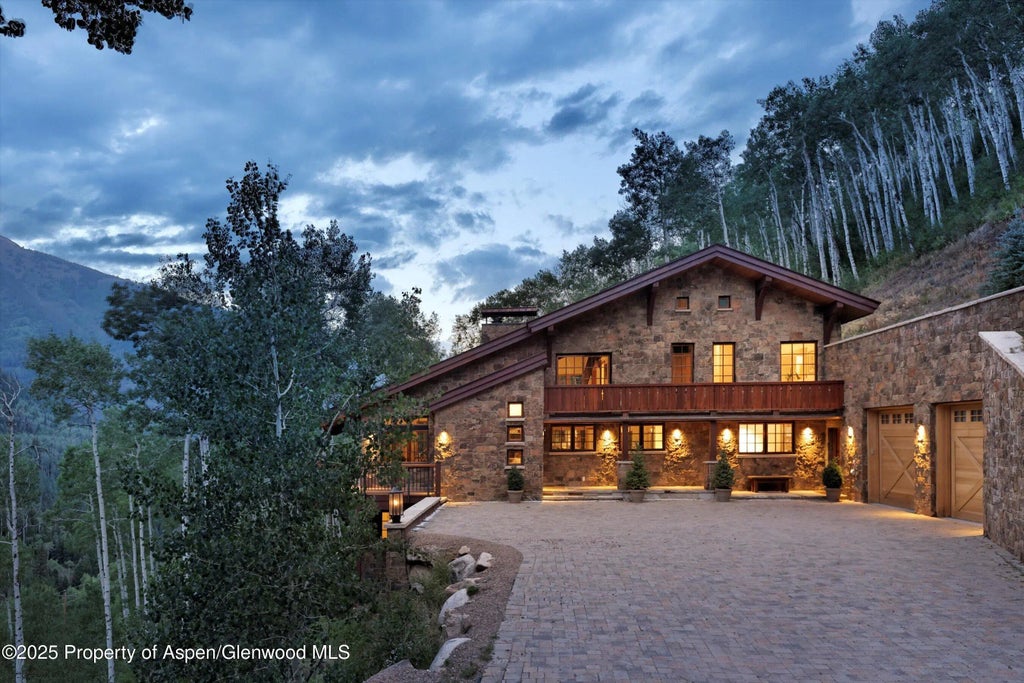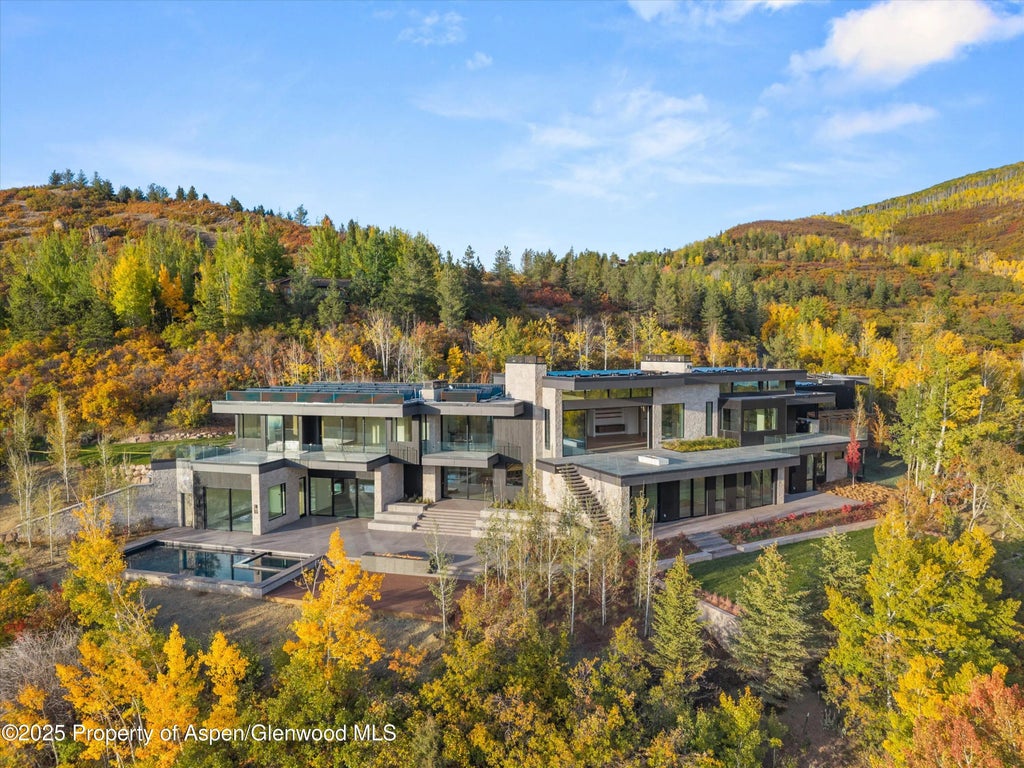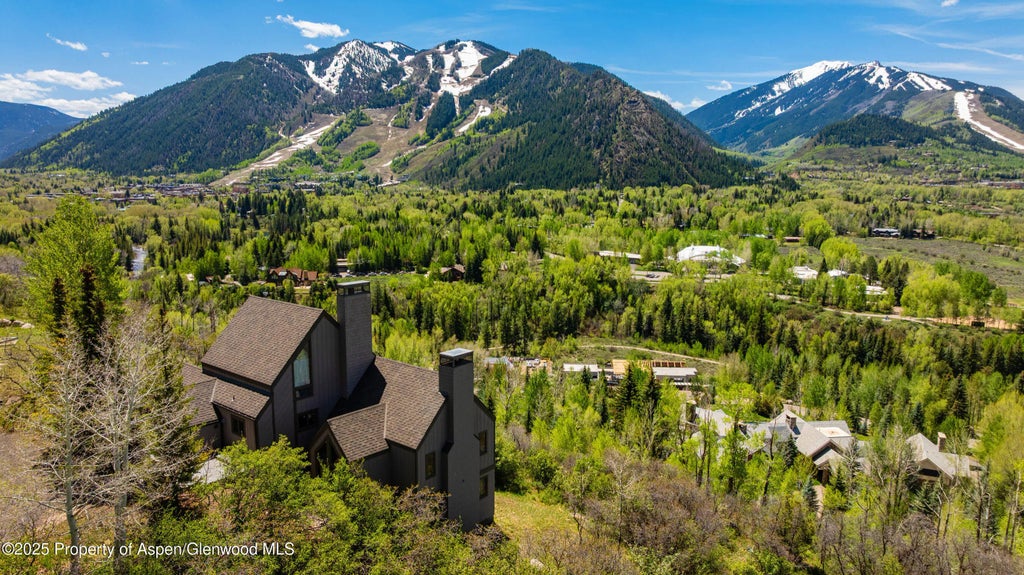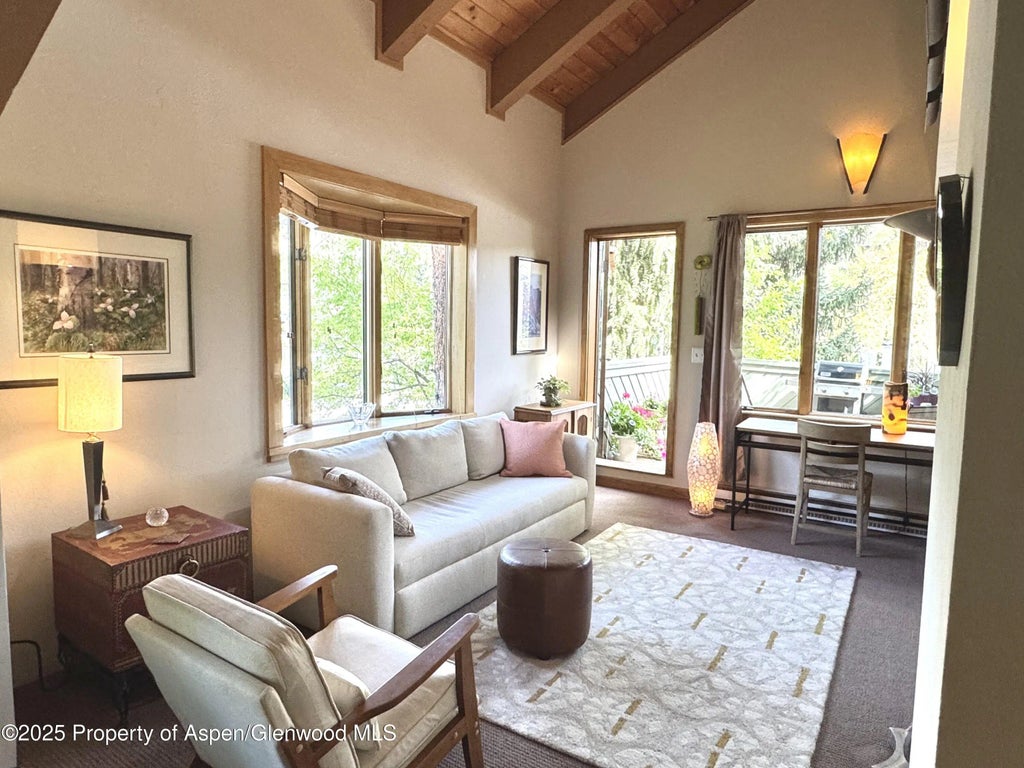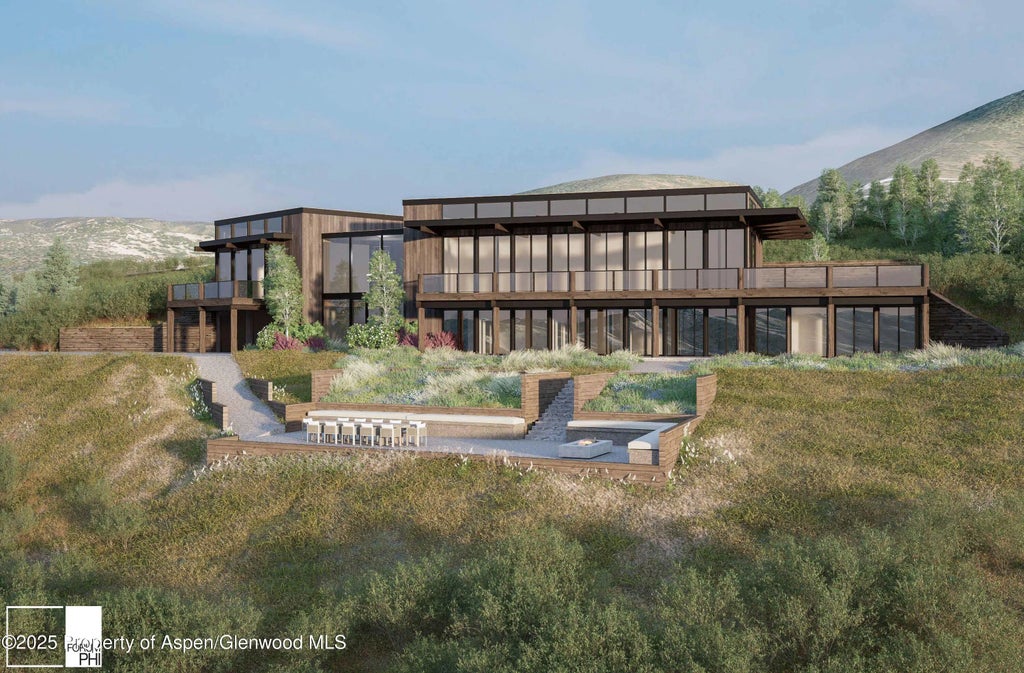How to Maximize the ROI from Your Aspen STR
Sustaining profitability in Aspen’s vacation rental sector requires more than favorable market timing—it depends on how effectively the property performs across shifting seasons and evolving guest preferences. Asset longevity, yield efficiency, and brand consistency must work in tandem to protect income and support long-term appreciation. When executed with precision, the result is a property that outpaces market volatility and builds equity while generating reliable cash flow.
Table of Contents
- Prioritize Guest Satisfaction with Precision
- Execute a Preventative Maintenance Protocol
- Leverage Dynamic Pricing with Market Responsiveness
- Refine Marketing Through Strategic Positioning
- Conduct Thorough Market Research
- Anticipate Shifts in Traveler Expectations
- Analyze Demand by Segment, Not Just Season
- Prioritize Comprehensive Property Upkeep
- Strategic Upkeep Protocols for Longevity and Efficiency
- Elevate Guest Experience
- Curate Amenities That Reinforce Property Identity
- Optimize Pricing through Seasonal Strategies
- Tactical Adjustments That Drive Yield
- Implement Targeted Marketing Campaigns
Prioritize Guest Satisfaction with Precision
Today’s Aspen traveler expects more than luxury—they expect intentionality. That means tailoring the stay to their lifestyle: offering pre-stocked kitchens with organic provisions, delivering ski passes in advance, or arranging private yoga sessions before check-in. These curated experiences convert one-time visitors into repeat guests and increase the property’s visibility across high-conversion booking platforms.
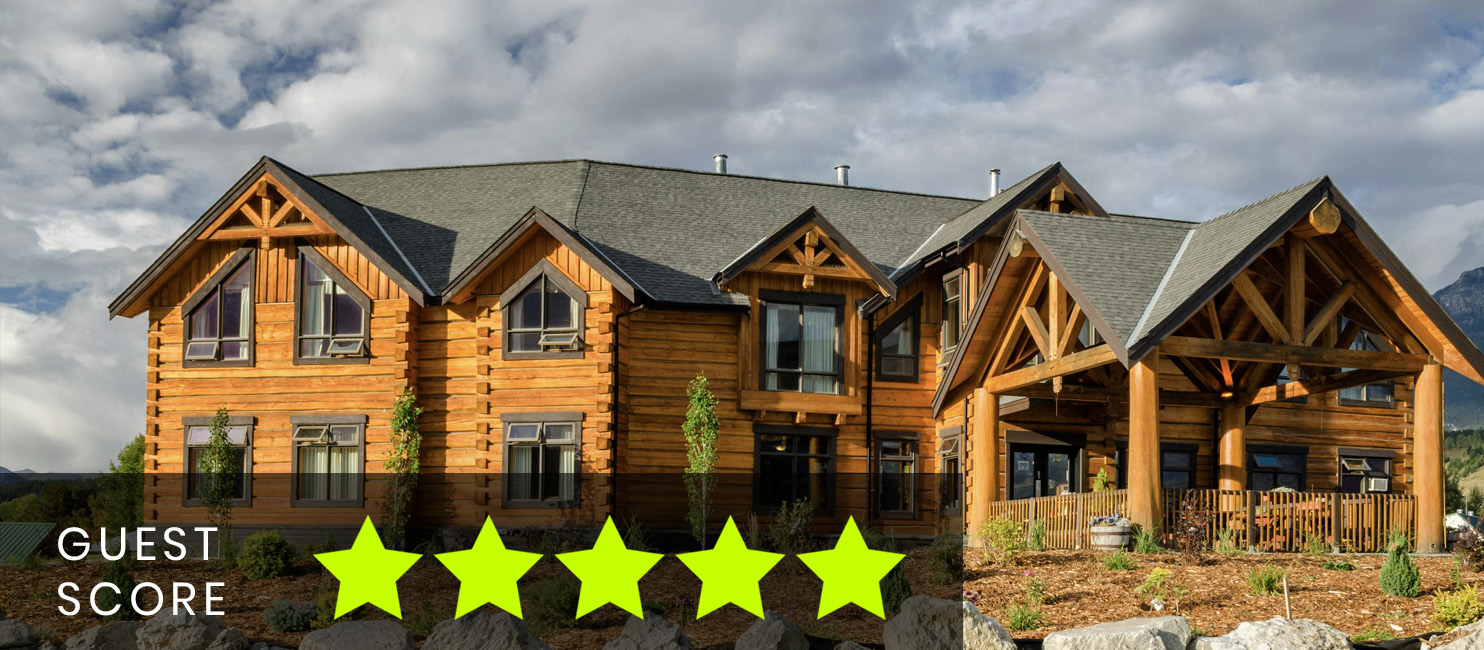
Properties that excel often rely on systems that streamline hospitality without sacrificing personalization. Automated guest messaging, multilingual digital welcome books, and real-time service alerts ensure every touchpoint—from arrival coordination to mid-stay adjustments—reflects professionalism and care. Properties that integrate seamless service protocols elevate guest loyalty and reduce operational friction, which in turn drives review quality and repeat booking percentages more predictably than ad spend alone.
Execute a Preventative Maintenance Protocol
Maintenance in Aspen is not reactive—it must be engineered for altitude. Properties exposed to snowpack, solar glare, and temperature swings require a hardened infrastructure plan. Smart systems—such as leak detection sensors, UV-rated exterior finishes, and snow-load monitors—have become standard in luxury rentals because they reduce failure risk during high-traffic booking periods. Annual checks should include thermal imaging scans on radiant floor systems, chimney flue inspections post-winter, and recalibration of humidity controls to preserve woodwork.

Well-managed properties maintain a year-round readiness schedule that aligns with seasonal hazards—spring runoff, wildfire season, and early frost. Coordinating with a local property management team ensures inspections are logged, vendor response times are guaranteed, and warranties remain intact. A proactive framework not only extends the lifespan of key systems but also preserves the property’s eligibility for high-end rental networks that require stringent quality control.
Leverage Dynamic Pricing with Market Responsiveness
In Aspen’s luxury rental market, rate optimization is not about adjusting for holidays—it’s about anticipating them. Advanced pricing engines now incorporate more than historical demand: they track real-time event scheduling, flight arrival data, and even snowfall forecasts. The most effective pricing frameworks leverage market intelligence to respond to booking velocity and competitor inventory shifts with speed and granularity.
Beyond software, Aspen’s high-yield properties employ live revenue management—reviewing listings weekly to adjust for microtrends like early-season snow surges or last-minute cancellations during cultural festivals. Strategic bundling also plays a role: offering three-night midweek packages during shoulder seasons or value-added enhancements like lift passes or spa credits in exchange for longer minimum stays. These techniques increase conversion rates while preserving rate integrity—key to protecting brand value in a premium market.

Refine Marketing Through Strategic Positioning
Effective marketing in Aspen begins with differentiation—not discounting. Properties positioned as immersive lifestyle experiences perform better across all channels. That means showcasing more than amenities: storytelling through visuals, describing the rhythm of a stay, and emphasizing exclusive access—such as private ski instructors, wilderness guides, or VIP event invitations. Professional photography must be paired with cinematic video, drone footage, and interactive floor plans to match the expectations of affluent digital consumers.
Owners serious about maximizing ROI invest in omnichannel presence. A standalone website with direct booking capabilities reduces dependency on third-party platforms and allows for greater control over brand messaging and guest data. Campaigns that align with Aspen’s event calendar—such as promoting availability during the Aspen Ideas Festival or Snowmass Bike Park openings—drive targeted traffic from niche audiences. Properties with a clearly defined identity consistently outperform generic listings, especially when supported by strategic remarketing and SEO-optimized content.

Conduct Thorough Market Research
Precision in market research separates high-performing vacation rentals from those that underdeliver. Owners who rely on national averages or general assumptions often miss Aspen’s hyperlocal benchmarks and booking behaviors. Advanced analysis must reflect not only seasonal shifts but also the influence of events, permit limitations, and traveler profiles unique to each neighborhood.
Static data points like average daily rate (ADR) or occupancy only provide a baseline. To outperform the market, investors must track real-time changes in booking velocity, cancellation rates, and flight search volume into Aspen/Pitkin County Airport. High-performing owners often integrate predictive demand data—such as snowfall forecasts, event ticket sales, and airline capacity—to detect booking surges before they fully materialize. This allows for rate positioning that maximizes yield without deterring early planners or repeat clientele.
Anticipate Shifts in Traveler Expectations
The needs of Aspen’s short-term rental guests are evolving faster than most listings can adapt. Travelers now prioritize properties that accommodate blended travel—work and leisure combined—requiring acoustically private workspaces, enterprise-grade internet, and flexible furnishings that can serve dual purposes. High-value guests also look for wellness infrastructure: HEPA air filtration, blackout bedrooms, and designated recovery areas with infrared saunas or cold plunge setups.
Rather than guessing what features matter, owners should audit the top-ranking listings across Airbnb Luxe and Vrbo Premier Host categories. Look for patterns in what earns five-star reviews versus what prompts discount requests. Many travelers now filter for homes with EV chargers or allergy-friendly construction materials—indicators of an emerging preference for sustainability and health-conscious design. Anticipating these pivots and budgeting for upgrades accordingly helps preserve rate strength and guest retention over time.

Analyze Demand by Segment, Not Just Season
Aspen’s booking calendar is shaped by more than snow reports and school breaks. Sophisticated owners segment demand by intent and lifestyle—identifying which weeks attract wellness retreats, which drive bookings from art collectors, and which show surges in digital nomads seeking extended stays. The week of the Food & Wine Classic brings a different demographic than the X Games or the Ideas Festival, each with distinct expectations for property layout, concierge access, and privacy.
This segmentation enables more refined lead targeting and amenity bundling. For example, a home with a professional-grade kitchen and walk-in wine cellar can command a premium during culinary events, while a retreat-style estate outfitted with yoga platforms and spa amenities attracts wellness travelers during off-peak months. Owners who align marketing strategy and property readiness with these micro-demands create elasticity in pricing and reduce vacancy exposure, even in shoulder seasons.
Prioritize Comprehensive Property Upkeep
A high-performing vacation rental in Aspen requires more than visual appeal—it demands physical readiness to operate at full capacity year-round. Rather than respond to issues reactively, top-tier owners implement a structured schedule that accounts for elevation-specific wear, material fatigue, and amenity usage intensity. Homes that support high guest turnover, winter sports traffic, and shoulder-season bookings face unique operational loads on appliances, flooring, and ventilation systems. Preventing revenue interruption means anticipating failure points and reinforcing the infrastructure that supports a seamless guest experience.
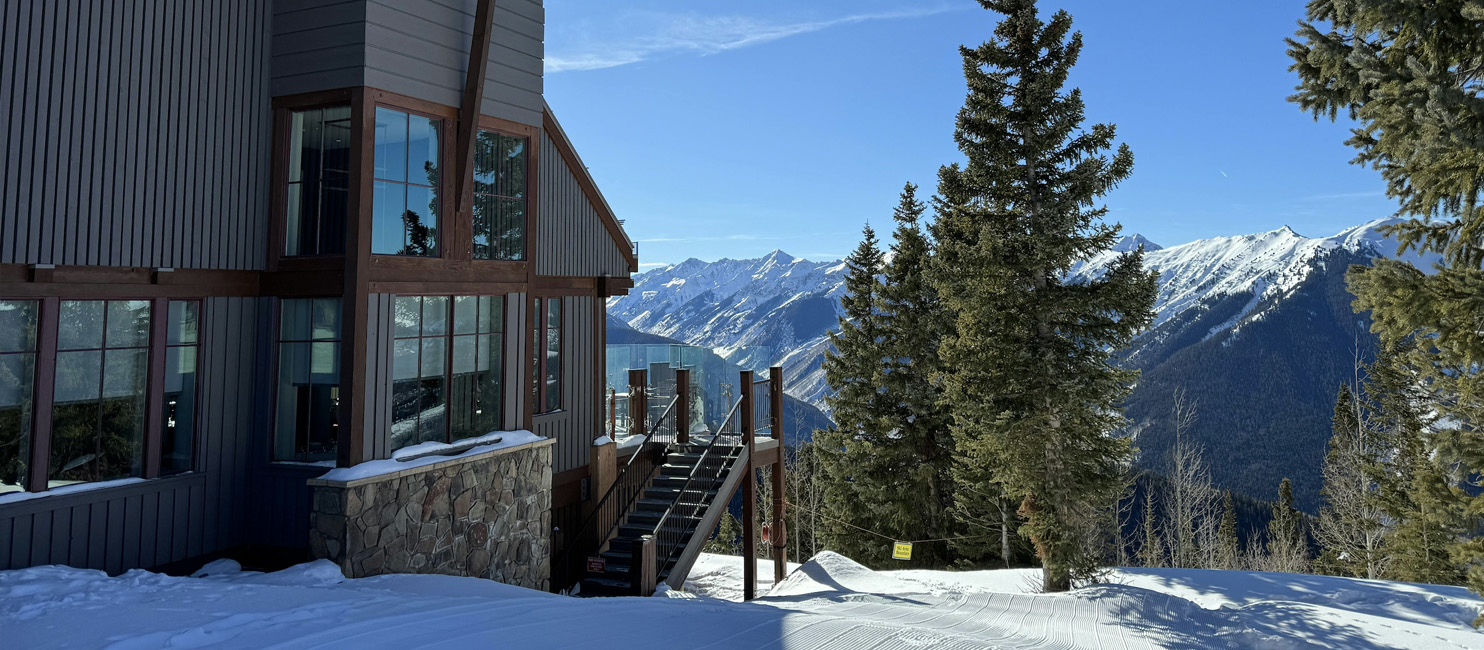
Mechanical systems must function with absolute consistency, particularly in luxury homes offering radiant floors, steam showers, or spa-grade amenities. Regular calibration of climate zones, inspection of water pressure regulators, and testing of electrical panels—especially those connected to backup generators or EV charging equipment—reduce surprise outages. In properties with smart home platforms, firmware updates and system integrations should be reviewed quarterly to ensure home automation remains responsive. Homes with indoor pools, saunas, or heated garages benefit from humidity control audits to prevent mold intrusion and maintain material integrity.
Strategic Upkeep Protocols for Longevity and Efficiency
Owners who treat their vacation rentals as investment-grade assets follow a preventative maintenance cadence calibrated for climate, guest volume, and amenity intensity.
- Spring Transition Readiness: Inspect exterior paint, stucco, and window seals for micro-cracking from freeze-thaw exposure. Review landscaping drainage and reposition irrigation lines to avoid soil erosion or foundation movement during runoff.
- Mid-Summer Systems Audit: Schedule descaling for water heaters and filter replacements for whole-home air purification systems. Homes with chilled wine storage or climate-controlled garages should complete thermal balance checks to ensure insulation efficacy.
- Fall Pre-Winterization: Reprogram thermostats to account for early frost and test radiant heat loops under tile or hardwood surfaces. Inspect stormwater diverters and confirm driveway snow-melt systems activate under low-temperature, high-moisture conditions.
- Winter Operational Monitoring: During peak occupancy periods, conduct weekly walkthroughs of utility rooms, spa areas, and mechanical closets. Confirm that freeze sensors, sump alarms, and water shut-off valves function without delay, especially in homes with lower-level guest suites or detached ADUs.
Owners managing across different usage periods—personal stays, guest bookings, and vacancy—benefit from property oversight designed for flexibility and accountability. Elite management teams, like those used by top-performing luxury rentals, maintain digital logs of vendor visits, track appliance runtimes, and coordinate preventive replacements before guest-impacting failures occur. For properties operating under short-term rental permits, detailed maintenance logs can also serve as compliance documentation—supporting renewals and reinforcing the property’s reputation with both guests and city regulators.
Elevate Guest Experience
Guest satisfaction in Aspen hinges on more than just comfort—it’s about immersion in a lifestyle that feels both exclusive and effortless. Properties that consistently outperform in review scores and rebooking rates are those that anticipate needs, eliminate friction, and deliver subtle luxury across every guest interaction. The difference between a good stay and an exceptional one often depends on nuances: the scent in the entryway, the lighting at dusk, or the warmth of the floors when boots come off after skiing.
Guests arriving at high-altitude properties often require a degree of orientation—acclimating to elevation, navigating neighborhoods, or understanding transport logistics. Owners who address these variables through smart integrations—like geofenced mobile notifications for arrival instructions or voice-activated home guides—create a seamless first impression. When paired with real-time concierge chat or curated media content (such as exclusive digital passes to local galleries or trail updates), these tools extend hospitality beyond the walls of the home and into the Aspen experience.
Curate Amenities That Reinforce Property Identity
The most memorable guest experiences stem from amenities that align with a sense of place and purpose. Rather than overloading a home with generic features, successful owners build a cohesive amenity profile that reflects the property's design tone, target demographic, and seasonal demand.
- Integrated Wellness Touchpoints: Infrared sauna pods, and designated recovery spaces with hyperbaric oxygen systems or PEMF mats are increasingly requested among wellness-driven travelers. These amenities elevate the property’s value proposition and differentiate it during non-peak months.
- Sleep Optimization Features: Beyond premium linens, owners are incorporating blackout drapery systems, noise-reduction sleep pods, and circadian lighting that adjusts throughout the day. This attention to restorative rest has proven valuable for multi-generational groups or long-stay professionals.
- Material Authenticity: Rather than purely aesthetic cohesion, properties now emphasize material provenance—using locally milled beetle-kill pine, natural wool from regional ranches, or stonework quarried from nearby ranges. These choices not only reinforce a sense of place but also communicate intentionality to guests seeking authentic luxury.
- Tech-Forward Functionality: Amenities such as EV-ready garages, biometric entry points, and AI-controlled climate zoning elevate the guest experience by removing friction. For large estates or multi-unit layouts, zoned audio systems and spatially programmed lighting scenes add environmental depth without overwhelming the user.
Experiential personalization—like custom-curated Spotify playlists that match the guest’s profile, or bath amenities sourced from Aspen-based apothecaries—builds emotional resonance. Guests not only remember these details; they share them, driving organic visibility across social platforms and high-trust booking channels. In a saturated luxury market, it’s not the square footage or the décor catalog that defines success—but how effectively the property becomes part of the guest’s Aspen memory.
Optimize Pricing through Seasonal Strategies
Aspen’s seasonal rhythm is unlike most resort markets—defined not only by snowfall and elevation but also by a calendar of high-profile events that drive global traffic. The margin between an average and exceptional booking month often lies in how precisely a property’s pricing aligns with these demand pulses. Owners who rely on static seasonal rates for winter, summer, and off-peak periods leave significant revenue untapped.

Strategic pricing begins with micro-segmentation. Winter rates, for example, should differentiate between early December value-seekers, Christmas week luxury travelers, and January’s affluent ski tour clientele. Each sub-season draws a different guest profile with unique booking windows and price elasticity. Similarly, summer should be broken into pre-Fourth of July lead-ups, peak festival weeks, and late-season leisure periods. Rate ladders must reflect this nuance—automated software like Wheelhouse or Rented.com’s Art tool can ingest these signals, but owner oversight remains essential for properties positioned at the top of the market.
Tactical Adjustments That Drive Yield
- Pinpoint Under-the-Radar Demand Surges: Monitor key booking patterns tied to lesser-known Aspen events—such as the Audi Ajax Cup or corporate retreats hosted by private firms. These often trigger abrupt luxury travel demand with high yield potential and minimal competition.
- Design Bespoke Low-Season Incentives: Instead of standard rate cuts during spring or early November, offer tailored experiences—private snowshoe tours, chef-led tastings, or weekday wellness retreats. These curated packages maintain premium positioning while appealing to niche traveler segments.
- Respond to Compression in Adjacent Markets: Stay informed on occupancy spikes in Snowmass, Basalt, and Carbondale. When these markets near capacity, Aspen listings priced correctly can absorb overflow demand, particularly for last-minute luxury bookings.
- Adjust Stay Requirements to Reduce Operational Drag: During holiday peaks, enforce 5–7 night minimums to reduce turnover strain and optimize margins. Conversely, in quieter periods, allow flexible check-in dates and shorter stays to boost midweek occupancy.
- Use Dynamic Length of Stay Pricing: If you have the technology, some pricing software allows you to bypass longer nightly minimums like mentioned above. Some software will actually allow you to take shorter windows of stay, but at the same price tag. So in other words, take a 5 night booking, but at the price of 7 nights.
- Incorporate Booking Window Insights: Use real-time data to understand how far in advance your specific unit type books. High-end estates often see shorter booking windows from repeat guests, while family condos may require longer lead times. Calibrate pricing to capture each segment’s behavior.
- Align with Travel Behavior Trends: Track changes in flight frequency, regional drive market interest, and macro travel sentiment. For instance, increased private jet arrivals during economic upswings correlate with higher demand for estate rentals and concierge-heavy experiences.
Pricing in Aspen is a precision discipline. Owners who use layered data—not just event calendars or competitor rates—achieve stronger revenue per available night and better protect their brand’s rate integrity across changing seasons.
Implement Targeted Marketing Campaigns
An Aspen vacation rental must enter the market with the same strategic rigor as a luxury product launch. Rather than rely on mass appeal, effective campaigns are built around specificity—targeting the right traveler segment with a message that reflects exclusivity, relevance, and value. In a market where travelers expect curated experiences, your marketing should mirror the bespoke nature of the stay itself.
High-performing listings often begin with editorial-style presentation. Go beyond standard real estate photography by producing seasonal image sets—shoot the same outdoor space in peak ski season, golden-hour summer, and autumn foliage to showcase year-round appeal. Feature-use photography should lead: demonstrate how a spa deck is used après-ski or how a reading nook becomes a remote office. Short-form video content and cinematic reels that show transitions—morning to evening, guest arrival to departure—build narrative engagement and increase visibility on algorithm-driven platforms.
Conclusion and an Invitation
In Aspen’s competitive short-term rental market, maximizing ROI requires more than just a prime location—it demands a strategic blend of guest-centric hospitality, proactive maintenance, dynamic pricing, and data-informed marketing. By implementing these practices, property owners can transform their rentals into high-performing assets that not only generate consistent cash flow but also build long-term equity. As traveler expectations evolve and market dynamics shift, staying adaptable and committed to excellence ensures your Aspen STR remains a standout choice for discerning guests year after year.
If you are serious about purchasing or exploring the Aspen real estate market for an investment property, please accept this invitation to contact Ryan Ryan Schwartz of Aspen Real Estate. Ryan is a STR owner himself and has a ton of experience navigating the Aspen market and understanding how to look at investment properties.

